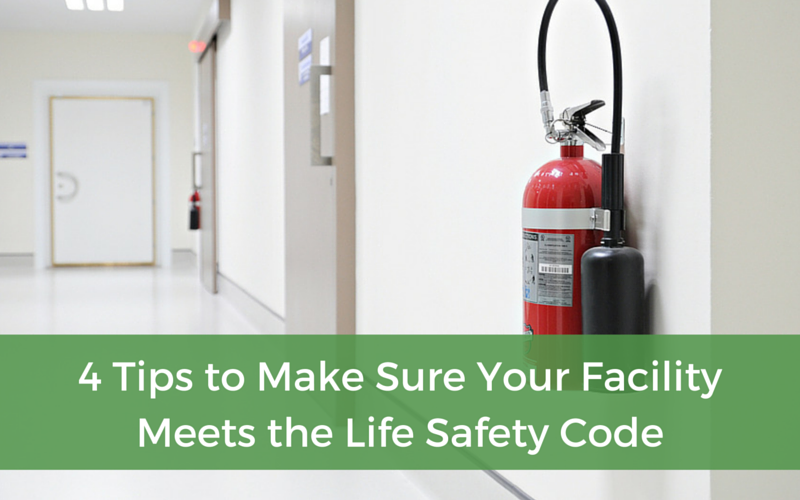
Ensuring fire protection and life safety systems are functioning and properly maintained is one of the most important aspects of a facility manager’s job.
Even though modern systems are incredibly reliable, they still need to meet code compliance and performance standards.
According to the National Fire Protection Association (NFPA), the Life Safety Code (LSC) is meant to help facilities specify “construction and operational conditions to minimize fire hazards and provide a safety system in case of fire.”
Basically, it’s a set of fire protection requirements designed to provide a reasonable degree of safety from fire that covers protection, construction, and operational features.
Here are some things to keep in mind when it comes to fire protection and life safety systems, as well as why performing inspections, testing, and maintenance to ensure they are functioning properly is so important.
1. Train Your Staff
The NFPA and the Occupational Safety and Health Administration (OSHA) require that all employees be trained on how to operate a fire extinguisher on an annual basis. Ensure that all team members meet such requirements and are also up to date on any facility-specific policies.
2. Pay Attention to Daily Housekeeping Activities
Facility housekeeping plays a bigger role in fire prevention than you might think. That’s because keeping up with daily housekeeping tasks can keep facilities clear of fire hazards like packing materials, trash, and other flammable items.
Make sure that all waste is placed in metal containers with tight-fitting lids, extra equipment is kept in a proper storage area so as not to impede fire exits or automatic sprinkler systems, and that oil, chemical and other flammable material spills are cleaned up immediately.
3. Keep on Eye on Preventative Maintenance
Like with many operations and maintenance tasks at your facility, carrying out preventative maintenance can save you from emergencies and save you money down the line.
You can bring in an outsourced third party to help with safety tests, quality inspections, and repairs to fire protection equipment. Follow the NFPA code to determine the frequency at which check-ups should be performed.
4. Have a Fire Prevention & Emergency Evacuation Plan
Your facility needs to create a fire prevention and emergency evacuation plan that outlines the following:
- Which employees are responsible for identifying heat-producing equipment, fire hazards, and combustible materials.
- The procedures that must be implemented in order to prevent fire emergencies.
- An established fire evacuation plan detailing when and how to respond to an emergency.
- A path of egress clearly identified by emergency and exit lights (implement a routine maintenance plan to ensure these lights are illuminated at all times).
- The team of individuals that are your dedicated fire emergency response team.
Communicate these procedures and responsibilities with all staff members and always have this document available so that employees can review it at any time. Your employees’ response to a fire emergency will be faster and easier if every team member knows his or her role and responsibilities.
Conclusion
Fires are devastating and can result in costly building damage, injuries to visitors and employees, and even potential fines. Follow the advice in the above tips in order to properly prepare your facility for a fire emergency and meet the NFPA’s Life Safety Code.



